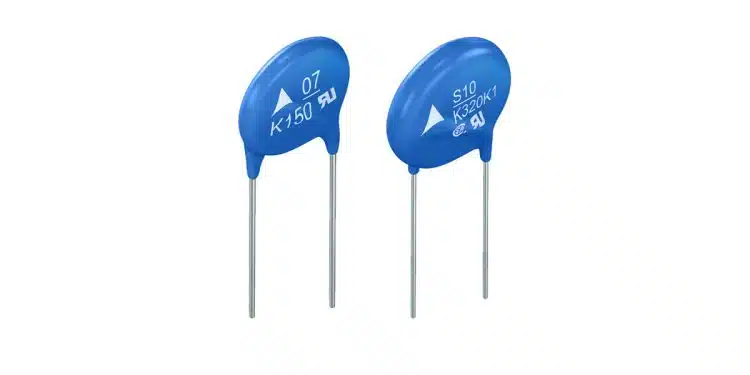TDK Corporation presents the EPCOS B72307S0* (StandarD S07 Compact Series) and B72310S0* (StandarD S10 Compact Series) series of extremely compact, leaded disk varistors.
The new varistors cover a wide voltage range from 115 VRMS to 460 VRMS in the StandarD S07 Compact series and from 130 VRMS to 680 VRMS in the StandarD S10 Compact series.
The maximum surge current capability of a single pulse current (8/20 µs) is up to 1200 A for the StandarD S07 Compact types, and up to 2500 A for the StandarD S10 Compact types. They offer a multiple surge current capability of 500 A (StandarD S07 Compact) or 1500 A (StandarD S10 Compact), according to UL 1449, 4th edition, type 5 listed. The varistors can be operated up to an ambient temperature of 105 °C without derating.
Like the proven models of the classic StandarD S07 and S10 series, the optimized types also feature the same outstanding performance and long-term reliability. The reduced disc diameters of 8.5 mm in the StandarD S07 Compact series and 11 mm in the StandarD S10 Compact series allow even greater flexibility. The coating of the discs consists of a flame-retardant synthetic resin according to UL 94 V-0. The SIOV varistors are certified according to UL, CSA, VDE and IEC.
PSpice models are available for all products in the StandarD S07 and S10 Compact series.
The optimized compact design and excellent electrical characteristics enable the space-saving use of the S07 and S10 StandarD Compact types in numerous applications such as LED lighting, switching power supplies and household applications such as microwaves and refrigerators.
Features
- Wide voltage range from 115 VRMS to 460 VRMS (S07) resp. 130 VRMS to 680 VRMS (S10)
- Maximum surge current capability of single pulse:1200 A (S07 Compact) resp. 2500 A (S10 Compact)
- No temperature derating up to 105 °C
- Long-term reliability
- Extremely compact dimensions: Diameter of 8.5 mm (S07) resp. 11 mm (S10)
- Flame retardant coating in accordance with UL 94 V-0
- Certifications: UL, CSA, VDE and IEC
- Available with PSpice simulation models
Applications
- LED lighting
- Switching power supplies
- Household appliances































